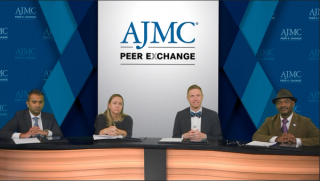
Clinical
Latest News

Hypomethylating Agents Can Produce Long Remission of MPNs but May Contribute to Morbidity, Mortality
Latest Videos

CME Content
More News

Publishing their findings on the earliest treated infants to date, the researchers detailed the outcomes of 2 patients treated with nusinersen in their first week of life after receiving a spinal muscular atrophy (SMA) prenatal diagnosis.

Investigators note that the most recent systemic lupus erythematosus (SLE) classification system has quickly become the gold standard, but disease classification remains challenging.

Real-world patients often differ from those eligible for clinical trials, and comparing results in both populations is a key step in fine-tuning treatment strategies for multiple myeloma.

Multisystem inflammatory syndrome (MIS) in children is a rare condition known to be associated with COVID-19, but more research is needed to identify at-risk patients and guide public health interventions.

The patient was 52 years old and underwent a liver transplant 13 years after his hematopoietic stem cell transplant (HSCT) to treat his sickle cell disease (SCD).

Emergency department (ED) visits and hospitalizations were 22% higher among cannabis users, with acute trauma and respiratory-related reasons as the primary causes for emergency care.

Of 10 patient-reported outcome measures studied, only 2 received an ‘A’ rating for sufficient content validity and internal structure.

Elli Papaemmanuil, PhD, assistant professor in computational oncology, Memorial Sloan Kettering Cancer Center, discussed current knowledge on the molecular profile of myelodysplastic syndromes (MDS) and potential use of precision medicine.

Viral Shah, MD, an endocrinologist and scientist, discusses the growing field of research into the connections between type 1 diabetes (T1D) and osteoporosis.

Outcomes for patients with ankylosing spondylitis (AS) and psoriatic arthritis (PsA) may depend on gender, time to diagnosis, and body mass index (BMI), according to subanalyses of the AQUILA study of patients taking secukinumab.

Patients from this diverse cohort experienced improvements in atopic dermatitis (AD) clinical scores after a year or more of treatment with dupilumab.

In patients with BRAF-mutated non–small-cell lung cancer (NSCLC), further research is needed to identify more treatment options that address the scope of subsets in this population.

Despite current guidelines recommending combination therapy, there are certain patients with pulmonary arterial hypertension (PAH) who remain on monotherapy for specific reasons.

Research presented at the 2022 American Society of Clinical Oncology Annual Meeting shows White patients with myelodysplastic syndrome (MDS) have worse overall survival outcomes than African American patients, contrary to previous findings in other cancer types.

The researchers of this new study wrote that although SMA carrier screening is recommended for all couples, current testing methods primarily focus on copy number loss of SMN1, which can result in false-negative test results due to intragenic mutations and silent carriers falling under the radar.

The tool relies on factors including creatinine, anti–double-stranded DNA antibody, and gender, among others.

Creating and validating effective risk assessment models could help facilitate appropriate prophylaxis for hemophilia, but more research is needed to confirm the prognostic value of various clinical risk factors and biomarkers.

Drs Richter and Kaufman conclude by discussing future promising developments in RRMM therapy.

Professional experts offer suggestions on how payers can be further educated on RRMM treatment.

Drs Joshua Richter and Jonathan L. Kaufman consider where IMiDs fall in the RRMM treatment landscape in comparison with emerging treatment options, such as bispecific antibodies and CAR T-cell therapy.

Two medical oncologists break down the role molecular testing has when treating NSCLC, from guidelines to common methods to barriers.

Alexander Spira, MD, PhD, FACP provides an overview of molecular testing in NSCLC.

Dr Paul Noble comments on the role lung transplants play in ILD treatment.

Daniel Culver, DO, concludes the clinical trial discussion by elaborating on Dr Highland’s assessments of the data that support the use of nintedanib, pirfenidone, and tocilizumab when treating IPF, PF-ILD, and SSc-ILD.

Research found fecal microbiota transplantation (FMT) to be an optimal cost-effective treatment strategy for first and subsequent recurrent Clostridioides difficile infection (CDI), challenging current guidelines.















































